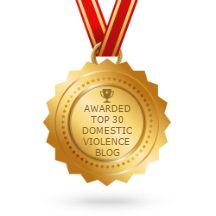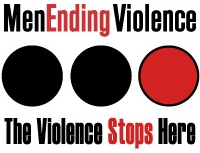Dating Violence in Youth Relationships
What is it? And How Do We Prevent It?
by Rona Amiri, BWSS Violence Prevention Co-ordinator
What is youth dating violence?
Dating violence is defined as a systematic pattern of domination where one partner uses abusive tactics to maintain power and control over the other partner and where these tactics escalate over time and where the victim alters her behaviour in an attempt to stop the abuse. (Battered Women’s Support Services 1993) Basically meaning your partner is trying to control you and using different abusive tactics to maintain that control.
So why is this relevant?
Youth between the ages of 15 and 24, in Canada, have the highest risk of dating violence. Police-reported statistics show us the number of dating violence survivors is highest among the 15-24 age group representing 43% of all incidents of dating violence in Canada. That’s pretty high and means as youth we experience a lot of dating violence. We also know young women between the ages of 15-19 experience ten times more violence in relationships than young men. So while dating violence is also experienced by young men the number of young women who experience dating violence is disproportionately greater.
In terms of same-sex relationships we see that males accounted for 60% of these incidents, and females accounted for 40%. Thus, in general, boys and men perpetrate more violence in dating relationships whether they are same-sex or different-sex. Yes, this is a gender related issue. There is clearly something happening in male culture that makes this violence acceptable.
What does dating violence look like?
Here are some tactics used by perpetrators of dating violence to maintain power and control within the relationship:
Physical
Physical violence is probably what most of us think of when we hear the term dating violence. 1 in 3 youth know a friend who has experience physical violence in a dating relationship. Most of us think that it’s probably easy to spot and stop physical violence. However, it can be more complicated that we think. There are the obvious types of physical violence which come to mind immediately: kicking, punching, scratching, biting, strangling. But then there are the less obvious methods of physical violence like pushing you against a locker in the hallway, grabbing your arm so you can’t leave, using their body to physically block an exit, and smacking your butt without consent. Our peers are less likely to interfere when a situation looks like a private matter or doesn’t look overtly violent.
Sexual
Being young and female is a risk factor of sexual assault. 86% of sexual offences reported to the police in the year 2004 were committed against females. Manipulating and making threats to get sex falls under this category as well. It doesn’t necessarily need to be overtly forceful to be considered sexual violence. For example, saying “if you loved me you would have sex with me” is a manipulative way to pressure someone into sex.
Emotional
Okay so we all know physical violence is not okay and most of us think if things got to that level we would leave. But what happens if there is no physical violence? No all abusive relationships include physical violence. It is important that we are able to recognize emotional abuse because it is the most common type of violence used. Dating violence is about maintaining power and control over ones partner.
Some behaviours that fall under emotional abuse category include threats, name calling, humiliation, intimidation, threats, and isolation. Constantly calling/texting you and wanting to know where you are at all times is also emotional abuse. Threatening self harm is also used as a manipulative tactic to control your behaviours.
Digital
Power and control tactics used in dating violence are used in the world of social media as well. Perpetrators can harass their current or ex partners online with little to no consequences. This includes threatening to share intimate images or text messages. And for youth who may be LGBTQ*2S there may be threats to “out” them to their family/community. Because it is through social media these things can be possible over long periods of time or even if the people involved are far in terms of geography.
Another current issue is the use of “revenge porn” websites, which allow users to post naked photos or videos of ex-partners and even personal information online. We also know this to be a gendered issue because disproportionally the targets are young women.
How can I help my friend?
Here are some ways you can support a friend/classmate/family member who may be experiencing dating violence:
- First of all, don’t be afraid to talk to someone if you think they need help! Let them know you notice what’s going on, that you want to help and make sure they are safe.
- Don’t be judgemental! Listen patiently and be supportive, acknowledging their feelings. It’s also super important you do not tell your friend what to do, it’s important your feels empowered to make their own choices.
- Remind your friend she is not alone and she deserves to be in a healthy relationship.
- Focus on your friend and not the person who perpetrates the violence, it’s important she still feels she can trust you and talk to you even if chooses to stay in the relationship.
- Tell your friend about BWSS resources, remember we can help!
- Help your friend with a safety plan!
What is a safety plan?
As a friend you can help someone who is experiencing dating violence by make a safety plan! A safety plan is a set of actions that can help lower your friends’ risk of being hurt by their partner. It includes information specific to her life that will increase her safety at school, home, and other places she may go daily.
Here is a copy of BWSS’s safety plan online.
Next steps…
Conversations about dating violence in schools are uncommon and for most youth there are little to no spaces to have these discussions. What happens instead is gender violence is lumped in with discussions around bullying. While discussing bullying is important it’s also critical that we do not equate the two issues. In general, the terms bullying/cyber bullying are usually “depoliticized” versions for terms like sexism, gender violence, racism, homophobia, and/or transphobia. If dating violence or gender violence is misnamed then we can’t have real solutions to the problem.
Being able to identify dating violence when we see it is important but, nothing will change if we aren’t given tools to make changes happen. The best way to end dating violence is to work with our peers so they feel empowered to stand up against sexism and abuse they witness. This means we are supporting one another both in person but also online and on social media. If one of your peers is being harassed online it is important that we are speaking up against it and that we are not sharing any individuals’ information/photos without their consent.
Be critical of the media you consume! Mass media definitely normalizes abusive and sexist behaviours (mass media being TV, movies and music videos to name a few). That’s why we need to stay critical of the media we consume. Being media literate allows us to point out the sexism that is fed to us on a daily basis.
Stay connected with us through our social media platforms and share your thoughts on dating violence, media and social change!![]()
![]()
Learn more about our YOUth Ending Violence Program here.
If you could do something to end violence against girls and women, wouldn’t you?





